Comments / Questions (35)
![]() Ester Unterfinger wrote:
Ester Unterfinger wrote:
Hallo, in dieser Anleitung fehlen die Angaben zu den Grammen, bzw. Alle Grössen benötigen 50gr. Das kann nicht sein. Können sie weiterhelfen ? Merci, Ester
08.12.2024 - 10:39DROPS Design answered:
Liebe Ester, so stimmt es, man braucht in die ersten 3 Größen jeweils 1 Knäuel in die 3 Farben, es wird dann mit 3 Fäden gestrickt - Beachten Sie, daß Ihre Maschenprobe stimmt. Viel spaß beim Stricken!
09.12.2024 - 08:45
![]() Barbara wrote:
Barbara wrote:
Buon giorno. È possibile avere le misure delle lunghezze del poncho? Grazie
04.05.2019 - 07:36DROPS Design answered:
Buongiorno Barbara. A seconda della taglia, la lunghezza al centro sul davanti è ca: 32-34-36 (38-41) cm. Trova l’indicazione all’inizio delle spiegazioni, prima del materiale occorrente . Buon lavoro!
04.05.2019 - 08:57
![]() Annalisa wrote:
Annalisa wrote:
Buonasera, volevo chiederti se esiste un tutorial di inizio, a parte l avvio, come si svolgono i giri seguenti, non capisco l apertura iniziale, grazie
29.11.2018 - 14:56DROPS Design answered:
Buongiorno Annalisa. Dopo aver avviato le maglie, lavora inizialmente in ferri di andata e di ritorno. Lavora 2 ferri a punto legaccio e poi prosegue a maglia rasata lavorando le prime 2 maglie e le ultime 2 maglie a legaccio. Segua le indicazioni per aumentare. Terminata l'apertura al centro sul davanti, lavora in tondo. Buon lavoro!
29.11.2018 - 16:00
![]() Francoise wrote:
Francoise wrote:
Bonjour,pouvez-vous m'expliquer pour l'encolure du modèle : sauter 2 m/ rangs Dois-je comprendre : je saute 2 m à chaque fois ? Et que veux dire dans la m /le rang suivant ? Grand merci pour votre réponse
08.10.2017 - 20:34DROPS Design answered:
Bonjour Françoise, pour crocheter la bordure, sautez, en fonction du sens de la partie tricotée, soit 2 mailles (sur les parties en largeur) soit 2 rangs (sur les parties en hauteur), et crochetez la ms suivantes dans la maille ou dans le rang suivant. Bon crochet!
09.10.2017 - 09:24
![]() Béatrice De Flores wrote:
Béatrice De Flores wrote:
Bonjour, Habituée à suivre sans problème les explications de vos modèles j'ai commandé le fil nécessaire à se modèle sans me poser de question. Cependant je n'arrive pas à comprendre comment on peut arriver à une fente en faisant des allers retours indistinctement. Faut-il répéter quelque chose en s'arrêtant à la moitié du travail? Les indications ne me semblent pas claires. A l'avance merci.
15.03.2017 - 18:09DROPS Design answered:
Bonjour Mme De Flores, on tricote en allers et retours au tout début, puis on continue en rond jusqu'à la fin, la partie tricotée en rangs va former la fente d'encolure. Bon tricot!
16.03.2017 - 08:26
![]() Gabriele wrote:
Gabriele wrote:
Hallo liebes Drops-team, Mit wie viel Fäden wird die Mütze gehäkelt? Liebe Grüße, Gabriele
13.09.2016 - 13:19DROPS Design answered:
Liebe Gabrielle, die Mütze ist mit 1 Faden Eskimo mit Häkelnadel Nr 8 (siehe Maschenprobe) gehäkelt.
13.09.2016 - 14:11
![]() Inge wrote:
Inge wrote:
Hvad betyder m/p under hækling af slids?
19.11.2015 - 20:29DROPS Design answered:
Hej Inge. m/p = maske/pind
20.11.2015 - 10:34
![]() Cinzia wrote:
Cinzia wrote:
Come posso fare questo poncho senza ferri circolari? grazie
20.01.2015 - 17:53DROPS Design answered:
Buonasera Cinzia, la prima parte del poncho è lavorata avanti e indietro sui ferri, poi viene chiuso e lavorato in tondo. Se preferisce può continuare con i ferri dritti, tenendo conto che per come è strutturato la cucitura risulterà sul davanti. buon lavoro!
20.01.2015 - 18:29
![]() Patouche wrote:
Patouche wrote:
Bonjour, je suis en train de faire ce modèle et je me demande ce que vous entendez en disant pour le bonnet rang 2 "faire une bride dans la 1 ere bride" je l'entends faire 3 ml ? En vous remerciant Cordialement Patouche
03.11.2014 - 17:12DROPS Design answered:
Bonjour Patouche, en début de tour, on remplace effectivement la 1ère B par 3 ml, les fois suivantes (R3 et 4), on crochète 1 B dans la m suivante. Bon crochet!
04.11.2014 - 09:11
![]() Anne Marie Hansen wrote:
Anne Marie Hansen wrote:
Jeg er ved at strikke str. 4 kan det passe at jeg skal strikke 10 cm glat strik efter udtagninger for at få den rigtige længde ? Jeg har kontrolleret strikkefasthed og den passer.
12.10.2014 - 21:37DROPS Design answered:
Hej Anne Marie, Du øger på hver 2.pind som der står tidligere i opskriften. God fornøjelse!
22.10.2014 - 10:39
Little Sprout#littlesproutset |
|
 |
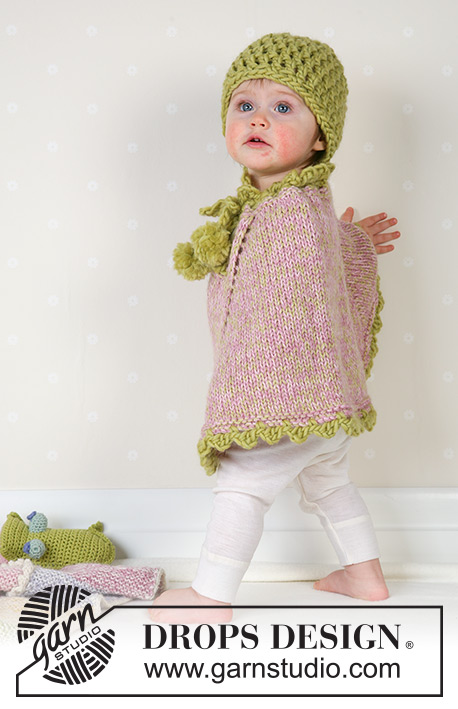 |
Knitted poncho with pompons and socks in DROPS Alpaca, and crochet hat in DROPS Snow. Available in baby and children sizes.
DROPS Baby 14-1 |
|
|
Gauge: 14 sts x 18 rows on needle size 6 mm / US 10 with 3 strands of Alpaca in stockinette stitch = 10x10cm/ 4" x 4". PONCHO: Worked top down. Cast on 54-56-58 (60-62) sts on circular needle size 6 mm / US 10 with 1 strand of each Alpaca color (= 3 strands). Insert a marker between the 2 middle sts (= mid back). Work 2 rows garter sts back and forth on needle from mid front (= end of rows), continue working back and forth (= slit mid front) as follows: Work in stockinette sts with the 2 outermost sts each side (mid front) in garter sts. AT THE SAME TIME increase 4 sts on every RS row as follows: K4, 1 yo, 1 yo on each side of the middle 8 sts and 1 yo when there are 4 sts left on needle. On next row, work yo’s as sts to create holes. When piece measures 6-7-8 (9-10) cm / 2⅜"-2¾"-3⅛" (3½"-4"), stop the slit and continue in the round on needle – knit all sts. Continue the increases on every other round, i.e. on each side of the middle 8 sts back and front. When there are 138-148-158 (168-178) sts on round, purl 1 round, and then knit 1 round whilst inc 1 st in every 4th st on round. On next round, bind off in purled sts. Crochet borders: Using Snow and hook size 8 mm/L, crochet a border round lower edge of poncho as follows: 1 sc in 1st st, *ch 4, 1 dc in the 1st of the 4 ch, skip 3 sts, 1 sc in next st*, repeat from *-*, and finish with 1 sl st in 1st sc. Crochet as follows round neck and along slit mid front (begin at top left side of slit): 1 sc in 1st st, *ch 1, skip 2 sts/rows, 1 sc in next st/row*, repeat from *-* and finish with 1 sl st in 1st sc. Continue round neck (not slit) as follows: 1 sc in 1st st, *ch 4, 1 dc in the 1st of the 4 ch, skip 1 ch, 1 sc in next ch*, repeat from *-*. Crochet a ch-string approx 60-65-70 (75-80) cm / 23½"-31½" long and pull through the 1st crochet round at neck. Make 2 small pompoms in Snow and attach to ch-string each side. ________________________________________________________________ HAT: Size: 1/3 – 6/9 – 12/18 months (2 – 3/4years) To fit head circumference: 40/42 – 42/44 – 44/46 (46/48 – 50/52) cm / 16"-17"-17½" (18½"-20") Materials: DROPS Snow from Garnstudio 50-50-50 (100-100) g color no 35, apple green DROPS crochet hook size 8mm / L Gauge: 8 dc x 5 rows = 10 x 10 cm / 4" x 4" Crochet tips: Replace 1st dc on each round with 3 ch. Crochet the hat from top down. Chain 6 and form a ring with a sl st in 1st ch. 1st round: 10 dc in ch-ring – see Crochet tips! 2nd round: 1 dc in the 1st dc, *ch 1, 1 dc in next dc*, repeat from *-* and finish with ch 1 and 1 sl st in 1st dc from beginning of round 3rd round: *1 dc in 1st dc, 2 dc in ch space*, repeat from *-* and finish with 1 sl st in 1st dc from beginning of round ( = 30 dc) 4th round: 1 dc in 1st dc, *1 ch, skip 1 dc, 1 dc in next dc*, repeat from *-* and finish with 1 sl st in 1st dc from beginning of round) (= 15 dc) 5th round: Continue with 1 dc in each dc and 1 dc in each ch, but crochet 2 dc in 0-2-4 (6-8) dc evenly distributed on round = 30-32-34 (36-38) dc. Now crochet 2-3-3 (4-4) rounds with 1 dc in each dc. Crochet next round as follows: 1 sc in 1st dc, *2 ch, skip 1 dc, 1 sc in next dc*, repeat from *-* and finish with 1 sl st in 1st sc from beginning of round. Cut the yarn. The hat measures approx 15-17-17 (19-19) cm / 6"-6¾"-6¾" (7½"-7½") from top to bottom edge. ________________________________________________________________ SOCKS: Size: 1/3 – 6/9 – 12/18 months (2 years) To fit foot length: 10-11-12 (14) cm / 4"-4½"-4¾" (5½") Materials: DROPS Alpaca from Garnstudio 50 g for all sizes color no 3140, baby pink DROPS STRAIGHT NEEDLES size 2.5 mm / US 1or2 DROPS crochet hook size 2.5mm / C Gauge: 26 sts x 34 rows on needle size 2.5 mm / US 1or2 with Alpaca in stockinette stitch = 10 x 10 cm / 4" x 4". 26 sts x 52 rows on needle size 2.5 mm / US 1or2 with Alpaca in garter sts = 10 x 10 cm / 4" x 4". Rib: *K2, P2*, repeat from *-*. SOCK: Work the sock back and forth from mid back. Cast on 48-52-56 (56) sts using needle size 2.5 mm / US 1or2 and 2 strands of Alpaca. Remove 1 strand and work 5-6-6 (7) cm / 2"-2½"-2½" (2¾") in Rib – stop after a RS row. From WS purl 1 row, at the same time decreasing 14-14-18 (14) sts evenly on row = 34-38-38 (42) sts. With row of eyelet holes: Work next row as follows from the right side: K1, *K2 tog, yo*, repeat from *-* and finish with K1. Purl 1 row from wrong side. Without row of holes: K 1 row from right side and purl 1 row from wrong side. Now put the outermost 12-13-13 (15) sts each side on a holder. Work 4 - 4.5 - 5.5 (6.5) cm / 1½"-1¾"-2¼" (2½") in stockinette sts over the middle 10-12-12- (12) sts. Put sts from holders back on needle and pick up 10-11-13 (16) sts on each side of middle piece = 54-60-64 (74) sts. Work 3-4-5 (5) cm / 1"-1½"-2" (2") in stockinette sts over all sts, at the same time after 1.5-2-2.5 (3.5) cm / ½"-¾"-⅞" (1¼") on next RS row start decreasing on every RS row until finished measurements as follows: Dec 1 st at the beginning and end of row and K2 tog on each side of the 2 middle sts. Bind off and sew seam at bottom of foot and up mid back. Pull silk ribbon or similar through eyelet row. Crochet border: Using Alpaca and hook size 2.5mm/C, crochet a border at the top of sock as follows: 1 sc in 1st st, *ch 3, 1 dc in the 1st of the 3 ch , 1 sc in each of the next 3 sts*, repeat from *-* and finish with a sl st in sc from beginning of round. |
|
Have you finished this pattern?Tag your pictures with #dropspattern #littlesproutset or submit them to the #dropsfan gallery. Do you need help with this pattern?You'll find 25 tutorial videos, a Comments/Questions area and more by visiting the pattern on garnstudio.com. © 1982-2025 DROPS Design A/S. We reserve all rights. This document, including all its sub-sections, has copyrights. Read more about what you can do with our patterns at the bottom of each pattern on our site. |
|

















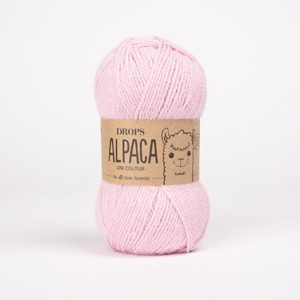
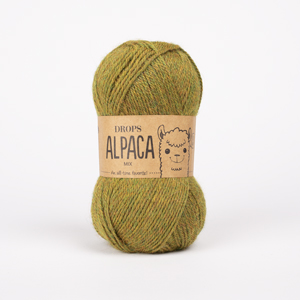
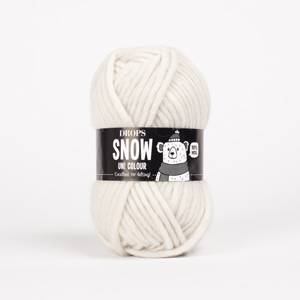






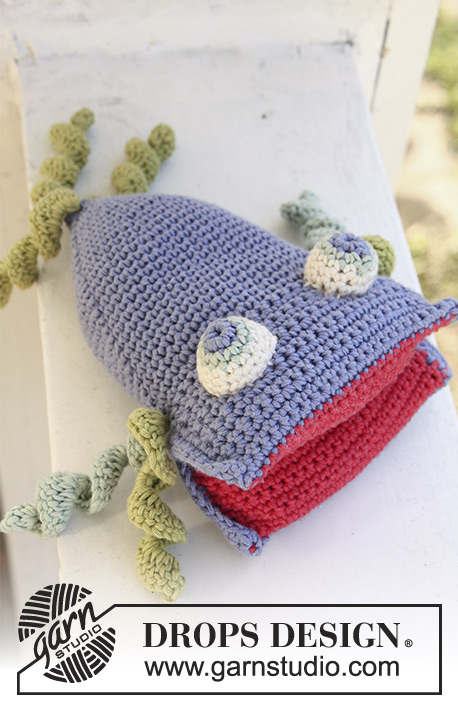















































Post a comment to pattern DROPS Baby 14-1
We would love to hear what you have to say about this pattern!
If you want to leave a question, please make sure you select the correct category in the form below, to speed up the answering process. Required fields are marked *.